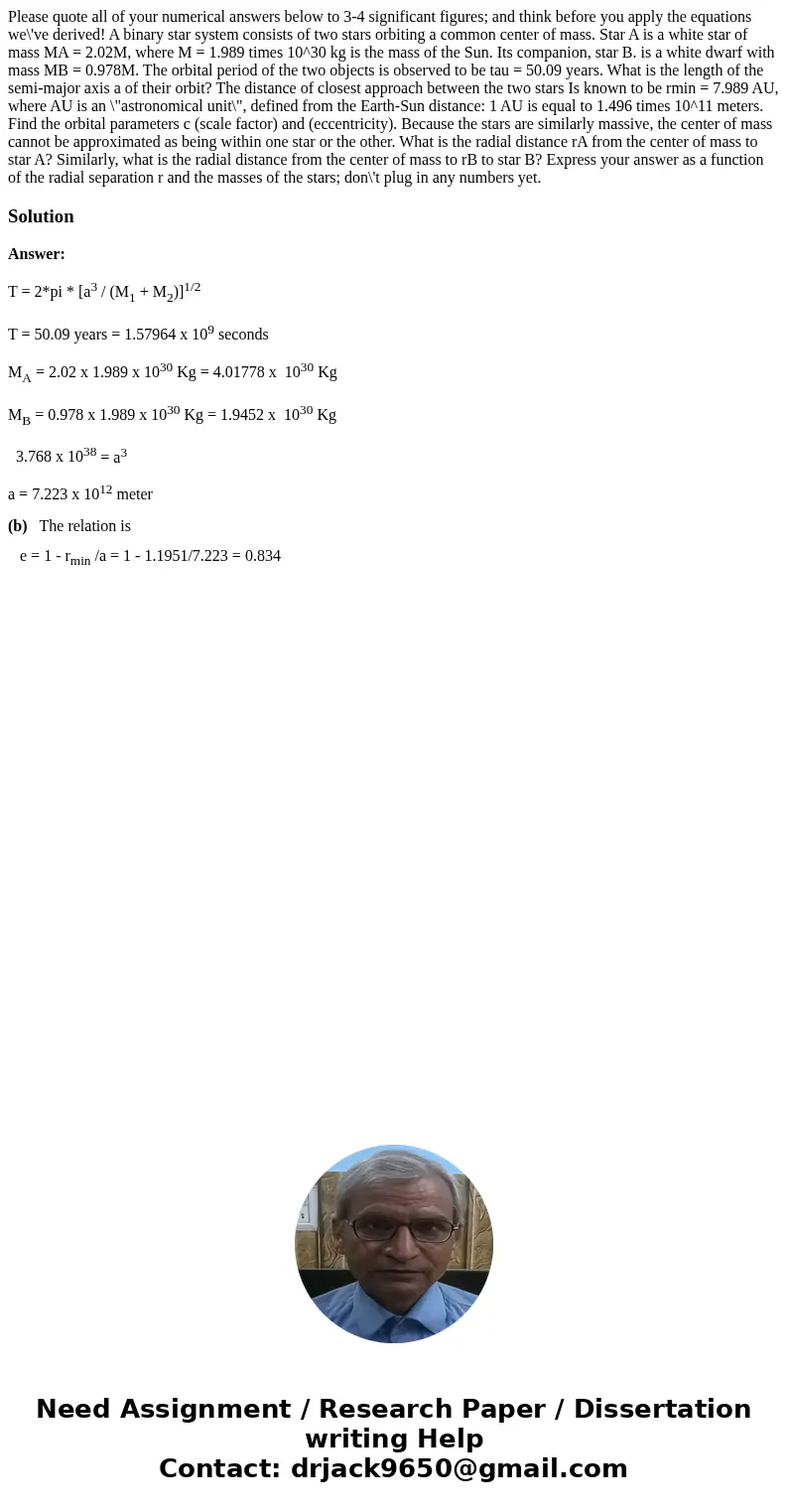Please quote all of your numerical answers below to 34 signi
Please quote all of your numerical answers below to 3-4 significant figures; and think before you apply the equations we\'ve derived! A binary star system consists of two stars orbiting a common center of mass. Star A is a white star of mass MA = 2.02M, where M = 1.989 times 10^30 kg is the mass of the Sun. Its companion, star B. is a white dwarf with mass MB = 0.978M. The orbital period of the two objects is observed to be tau = 50.09 years. What is the length of the semi-major axis a of their orbit? The distance of closest approach between the two stars Is known to be rmin = 7.989 AU, where AU is an \"astronomical unit\", defined from the Earth-Sun distance: 1 AU is equal to 1.496 times 10^11 meters. Find the orbital parameters c (scale factor) and (eccentricity). Because the stars are similarly massive, the center of mass cannot be approximated as being within one star or the other. What is the radial distance rA from the center of mass to star A? Similarly, what is the radial distance from the center of mass to rB to star B? Express your answer as a function of the radial separation r and the masses of the stars; don\'t plug in any numbers yet. 
Solution
Answer:
T = 2*pi * [a3 / (M1 + M2)]1/2
T = 50.09 years = 1.57964 x 109 seconds
MA = 2.02 x 1.989 x 1030 Kg = 4.01778 x 1030 Kg
MB = 0.978 x 1.989 x 1030 Kg = 1.9452 x 1030 Kg
3.768 x 1038 = a3
a = 7.223 x 1012 meter
(b) The relation is
e = 1 - rmin /a = 1 - 1.1951/7.223 = 0.834

 Homework Sourse
Homework Sourse